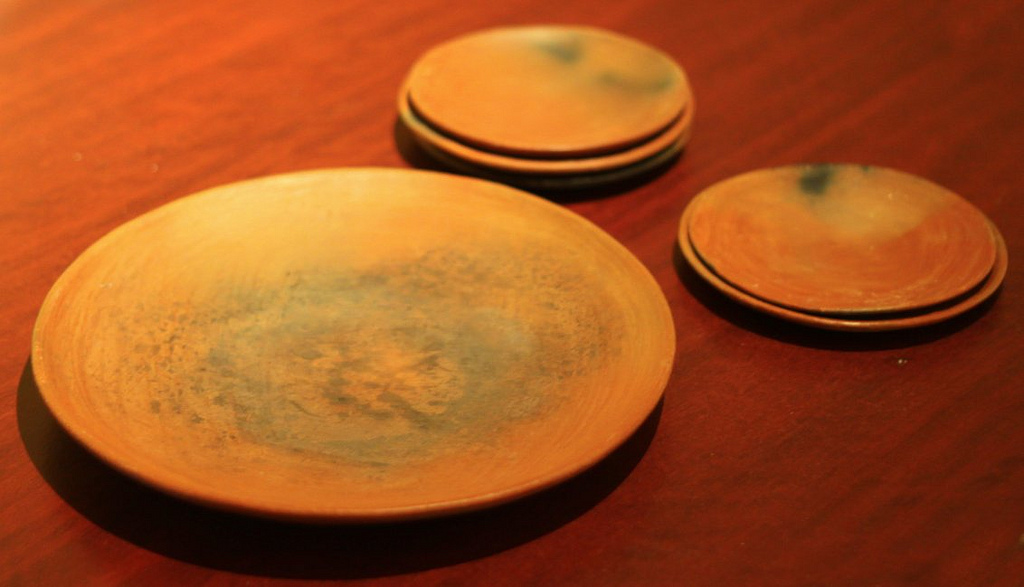comal (cookware) on:
[Wikipedia]
[Google]
[Amazon]
 A comal is a smooth, flat griddle typically used in
A comal is a smooth, flat griddle typically used in
 A comal is a smooth, flat griddle typically used in
A comal is a smooth, flat griddle typically used in Mexico
Mexico, officially the United Mexican States, is a country in North America. It is the northernmost country in Latin America, and borders the United States to the north, and Guatemala and Belize to the southeast; while having maritime boundar ...
, Central America
Central America is a subregion of North America. Its political boundaries are defined as bordering Mexico to the north, Colombia to the southeast, the Caribbean to the east, and the Pacific Ocean to the southwest. Central America is usually ...
, and parts of South America
South America is a continent entirely in the Western Hemisphere and mostly in the Southern Hemisphere, with a considerably smaller portion in the Northern Hemisphere. It can also be described as the southern Subregion#Americas, subregion o ...
, to cook tortillas and arepas, toast spices and nuts, sear meat, and generally prepare food. Similar cookware is called a '' budare'' in South America. Some comals are concave and made of ''barro'' (clay). These are still made and used by the indigenous peoples of Mexico and Central America. Comals are similar to the American griddle or the Indian tawa, and are often used and named interchangeably with these.
Comals for home use are generally made from heavy cast iron
Cast iron is a class of iron–carbon alloys with a carbon content of more than 2% and silicon content around 1–3%. Its usefulness derives from its relatively low melting temperature. The alloying elements determine the form in which its car ...
, and sized to fit over either one burner on the stovetop (round) or two burners front to back (elongated oval). In many indigenous and pre-Hispanic cultures, the comal is handed down from grandmother to mother to daughter, the idea being that a comal tempered over many years of use will heat faster and cook cleaner.
History
The history of such cooking methods dates back to thepre-Columbian
In the history of the Americas, the pre-Columbian era, also known as the pre-contact era, or as the pre-Cabraline era specifically in Brazil, spans from the initial peopling of the Americas in the Upper Paleolithic to the onset of European col ...
era, when powdered- hominy tortillas were cooked on an earthenware comal over an open fire. Comales were also used to toast cacao beans. The word "comal" comes from the Aztec
The Aztecs ( ) were a Mesoamerican civilization that flourished in central Mexico in the Post-Classic stage, post-classic period from 1300 to 1521. The Aztec people included different Indigenous peoples of Mexico, ethnic groups of central ...
Nahuatl
Nahuatl ( ; ), Aztec, or Mexicano is a language or, by some definitions, a group of languages of the Uto-Aztecan language family. Varieties of Nahuatl are spoken by about Nahuas, most of whom live mainly in Central Mexico and have smaller popul ...
word ''comalli''.
Originally they were thin ceramic pieces, with slightly raised edges. They are found at archaeological sites throughout Central America, with the earliest examples dating to 700 BCE.
See also
* Tava or tawa * Mitad and mogogo, baking surfaces for Ethiopian injera breadReferences
Central American cuisine Cooking appliances Latin American cuisine Mesoamerican cuisine Mexican food preparation utensils South American cuisine {{cooking-stub